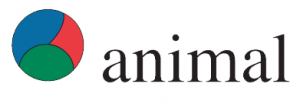Document type: review (guest) published in Animal
Authors: V.A. Moustsen, Y.M. Seddon, M.J. Hansen
Preview: In development and implementation of housing systems for pigs there has been significant focus on pig welfare including loose housing of lactating sows either indoors or outdoors. However, it is equally important to consider environmental and economic aspects of housing systems to ensure sustainability in livestock production. The aim of this work was to review the sustainability (societal and animal welfare, environmental and economic impact) of different approaches for housing farrowing and lactating sows in indoor environments. The review illustrates that like outdoor systems, indoor housing systems are challenged in meeting the three pillars of sustainability when changing housing of lactating sows from conventional crates with permanent confinement to systems with temporary or zero confinement. Increased space allowance increases sow welfare, but in addition, pen designs with increased space increase ammonia emission, investment and running costs. Furthermore, indoor loose lactation systems come with an increased risk for piglet mortality, which unless effectively managed, reduces animal welfare and the economic sustainability of the system. If farms retrofit existing buildings, the larger space per loose farrowing pen leads to a reduction in pen numbers and therefore herd size, reducing the farm profitability. If farmers choose to reduce herd size to meet requirements, welfare will be reduced while emissions will be increased as more sows are brought into production again in other countries, often in conventional systems with fully slatted flooring to meet the demand for animal protein to feed the growing global population. The review indicates there are ways to house lactating sows loose outdoors with increased opportunity to perform highly motivated species-specific-behaviours compared to the conventional crates with continuous confinement. These systems can offer a lower risk for environmental impact and economic risk through reducing piglet mortality. Nevertheless, a trade-off for continual freedom of sow movement may be required as zero confinement increases the risk of piglet mortality and increased emissions. It is important to raise awareness among citizens and policy makers that loose farrowing and lactating systems if applied today come with a higher production cost and the risk of increased environmental impact. More research and development are needed in relation to the environmental and economic impact of these systems in order to give farmers the best information to invest in new and more sustainable production systems.




